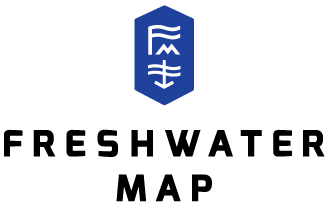FAQs
The questions we are asked most often and our answers to them
I need a customized river flow map. Can you provide that?
Yes. We would love to work with you, learn more about your needs, and deliver the map the has all the information you need.
I’m a river consultant and I need to improve my existing models. Can you provide data to optimize my models?
Yes. We have the extensive technology, manpower, and expertise necessary to directly measure rivers and gather the most detailed and accurate possible. This will help you validate or improve your existing models. We are flexible and can meet strict timelines if needed. Contact us to request a proposal.
How much can you map per day?
Using our direct measurement approach, we float up to 50 river kilometers per day and measure as we go.
For how long, approximately, is your data accurate?
Rivers, as we all know, change. Different rivers change at different rates. Our analysis can help clients better understand the rate of change that occurs with different flow regimes. The data set of bathymetry and 3-D flow characteristics of a single river with constant flow over cobbles and boulders will remain unchanged for years. The same parameters on a river with highly variable flow and high sediment transport characteristics may be accurate for weeks. Understanding the dynamics of the river and how it will change under different flow regimes is required to fully understand the manage the resource.
Do you supply the teams that gather river data?
Yes. We have the best river data collection crew on the planet. Each team member is trained to maximize the accuracy of the data collected. All have extensive whitewater, computer, and wilderness travel experience. They are a passionate crew that loves what they do. Sometimes they have a hard time believing they’re being paid for their job.
What purposes might your data be used for?
A few examples of how our clients are using our data:
- Our data is being used to determine the abundance and location of habitat for species of concern and how these parameters change across different flow volumes.
- Drift maps are used to determine optimum flow regimes to maximize the successful reproduction of specific species.
- Temperature maps are used to help determine habitat suitability at specific locations throughout rivers.
- Consultants are using our data to optimize and validate their existing models.
- State, local, and tribal organizations are using our data to manage fisheries, power generation, development, water usage, and recreational river use.
- Environmental groups are using our data to monitor the effectiveness of their river restoration projects.
Are there other potential uses for your river data?
Absolutely. Potential uses for our data include:
- Creating a global map of rivers, including flow and temperature data. This would be incredibly useful for everyone impacted by rivers, including recreational users, power companies, governmental and tribal organizations, companies involved in agriculture, and environmental groups.
- Providing activity-specific maps for recreational river users, like fishermen, rafters, boaters, campers, and more.
- Other projects that we will announce soon.
If you have any other questions, please contact us.
